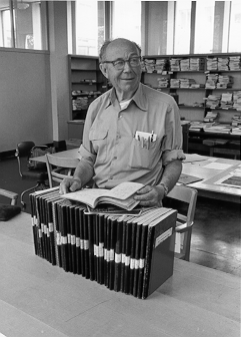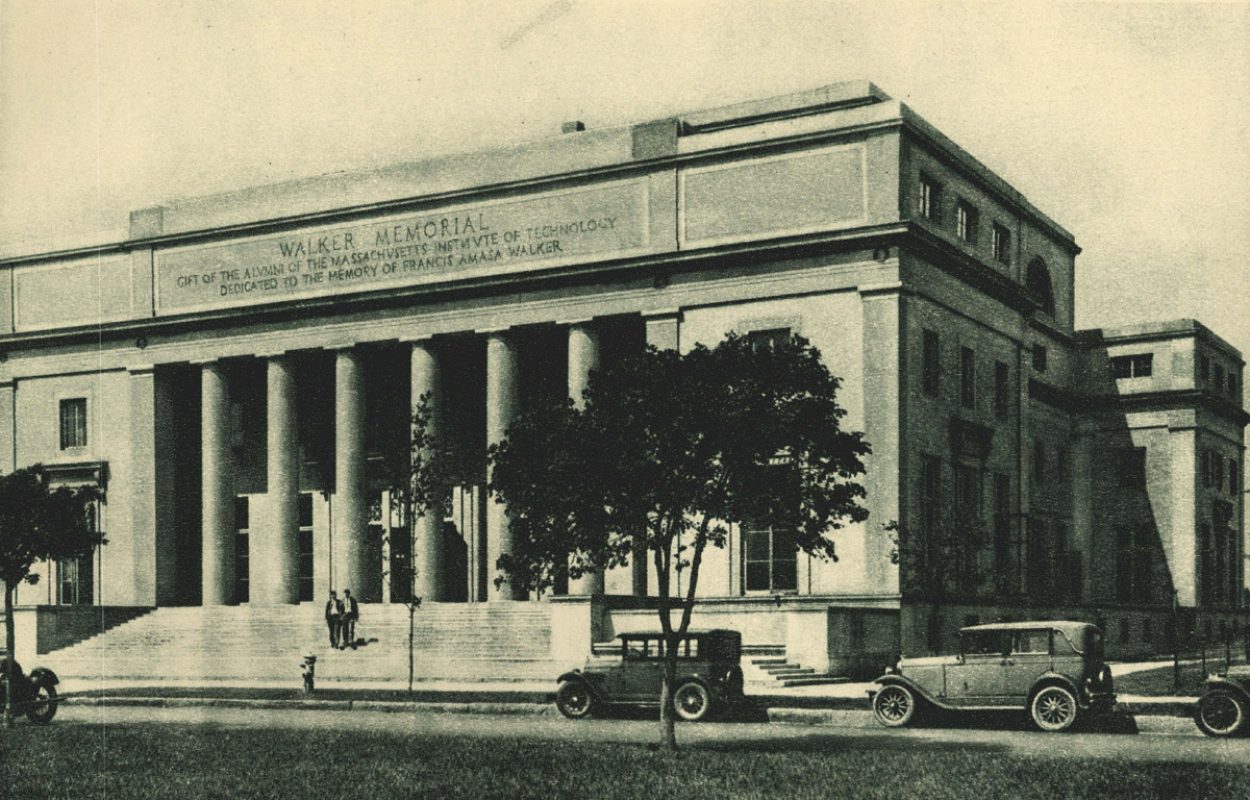Harold Eugene Edgerton

Doc Edgerton with his laboratory notebooks
Harold Eugene “Doc” Edgerton, 1903-1990, B.S. 1926, University of Nebraska; S.M. 1927 and Sc.D. 1931 in electrical engineering, Massachusetts Institute of Technology, was professor of electrical engineering at MIT, 1928-1966; Institute Professor, 1966-1968; and Institute Professor emeritus, 1968-1990. Edgerton perfected the stroboscope and developed photographic techniques that allowed very rapid events to be observed and captured on film. He also developed techniques for underwater exploration, using sonar devices and flash photography, and participated in many oceanographic and archaeological expeditions. During World War II he designed a strobe lamp for nighttime aerial reconnaissance photography for the US Army Air Force and directed its use in Italy, England, and France. In 1947, with Kenneth J. Germeshausen and Herbert E. Grier, former students, he formed Edgerton, Germeshausen and Grier, Inc. (EG&G,Inc.), a company specializing in electronic technology. In 1953 he began a long association with French underwater explorer Jacques Yves Cousteau, accompanying him on numerous expeditions and designing various devices for underwater photography and exploration.
An extensive collection of Harold Edgerton’s papers (MC 25) is held by MIT’s Institute Archives and Special Collections. The collection includes his laboratory notebooks, which document his research from 1930 to 1990 as well as many other personal and professional activities. Professor Edgerton’s laboratory notebooks have been digitized as part of the Edgerton Digital Collections (EDC) Project.
Exhibits:
- World War II Nighttime Aerial Reconnaissance Photograph, 1944
- Vannevar Bush Letter to Edgerton about the Physics of Baseball, 1965
- Sonar chart, 1964, from Search for Spanish Armada Wreck of 1588,
Tobermory Bay, Scotland
